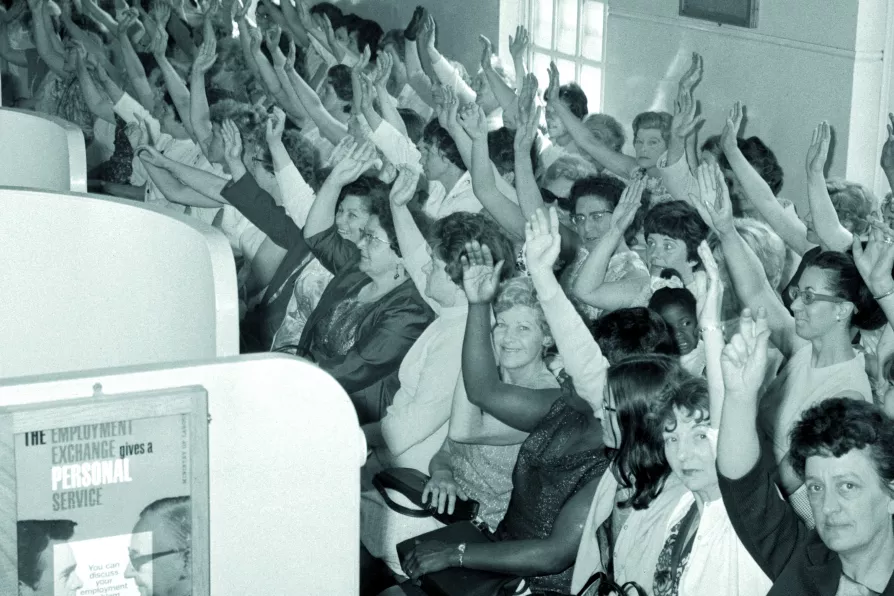Once the bustling heart of Christian pilgrimage, Bethlehem now faces shuttered hotels, empty streets and a shrinking Christian community, while Israel’s assault on Gaza and the tightening grip of occupation destroy hopes of peace at the birthplace of Christ, writes Father GEOFF BOTTOMS

 A show of hands by 187 female sewing machinists at the Ford Plant in Dagenham, Essex, when they voted unanimously to return to work, ending their dispute.
A show of hands by 187 female sewing machinists at the Ford Plant in Dagenham, Essex, when they voted unanimously to return to work, ending their dispute.
FROM campaigning for better working conditions and an eight-hour day to demanding equal pay, women have played a vitally important role in Britain’s labour movement — rallying, organising and inspiring millions of us to fight for employment justice.
On International Women’s Day 2022, it is worth highlighting some of the achievements and continuing challenges of women’s long struggle for workplace equality.
Women’s involvement in the labour movement dates back to the early days of the industrial revolution when new jobs were created for women in the mills and factories.

ANN HENDERSON looks at the trailblazers of the Women’s Trade Union League and their successful fight for female factory inspectors — a battle that echoes in today’s workplace campaigns

Women are a vital part of the labour movement and have much to contribute, but there’s far more to be done to make sure that our sisters’ voices are truly heard, says PHILIPA HARVEY

The Morning Star invites readers to join Jeremy Corbyn and others to celebrate a working-class female victory that echoes through the ages











